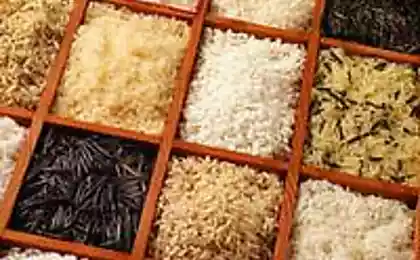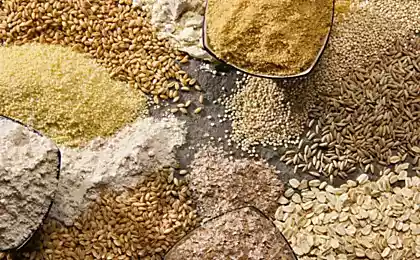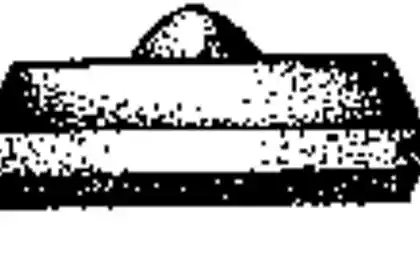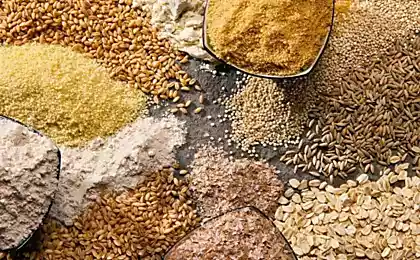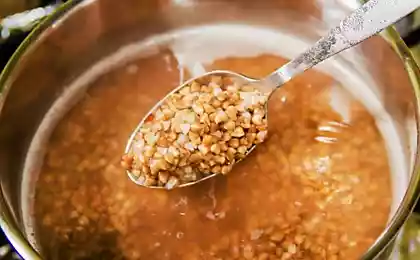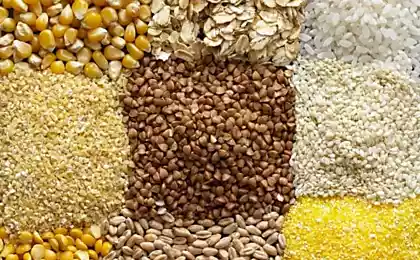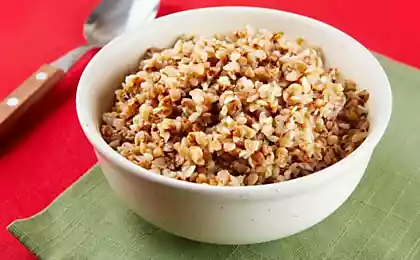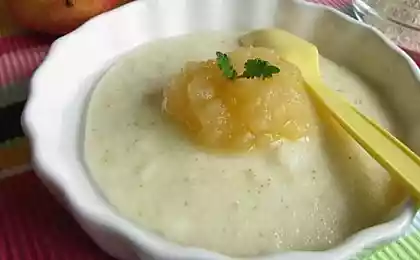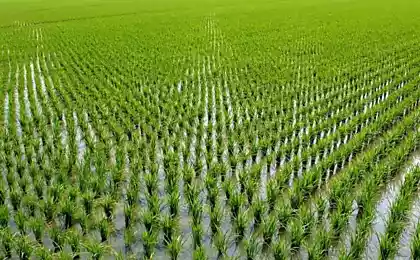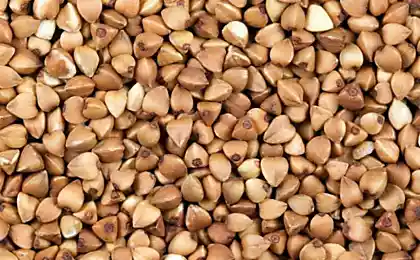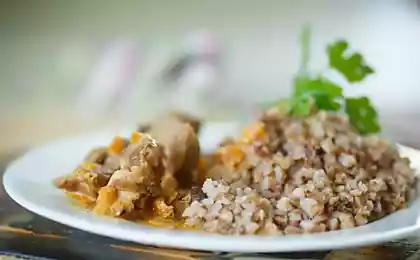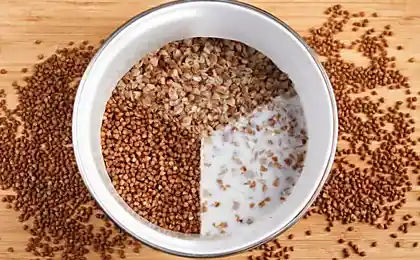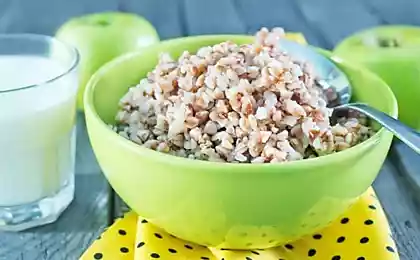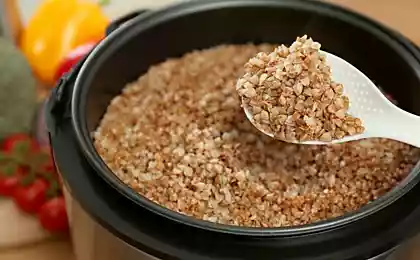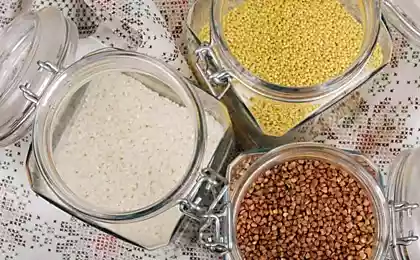274
How to cook porridge from any kind of cereal
Porridge was and remains the most common dish in Russian cuisine. And this is understandable, since ancient times, the Slavs porridge is not just food, but a ritual dish that accompanies a person throughout life.
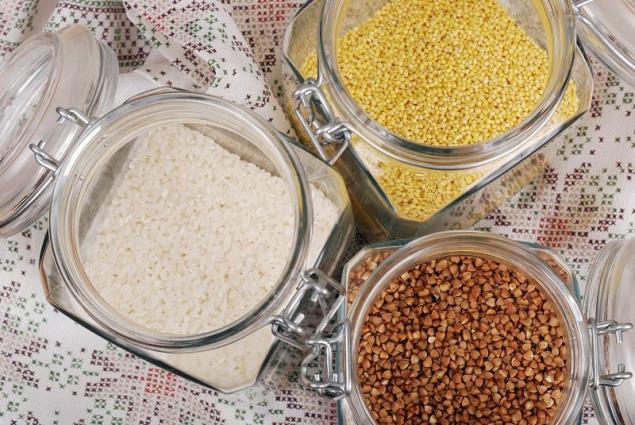
In cereals there is everything necessary for our body. But how to properly prepare this or that porridge, not everyone knows. Usually we take cereals, pour water, boil and do not cease to complain about the freshness of taste.
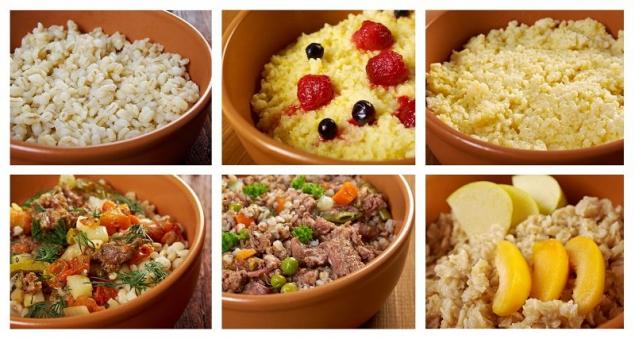
Break stereotypes and prepare a really tasty, crumbly and fragrant porridge from wheat, corn, oatmeal, wheat, pea, buckwheat will help small tricks and unusual ingredients, which will be discussed in this article.
There are general rules that do not hurt to adhere to in the preparation of any porridge. For cooking porridge, enameled pans are not suitable: everything sticks to them, and it is difficult to clean the burnt from the scratch-prone surface.
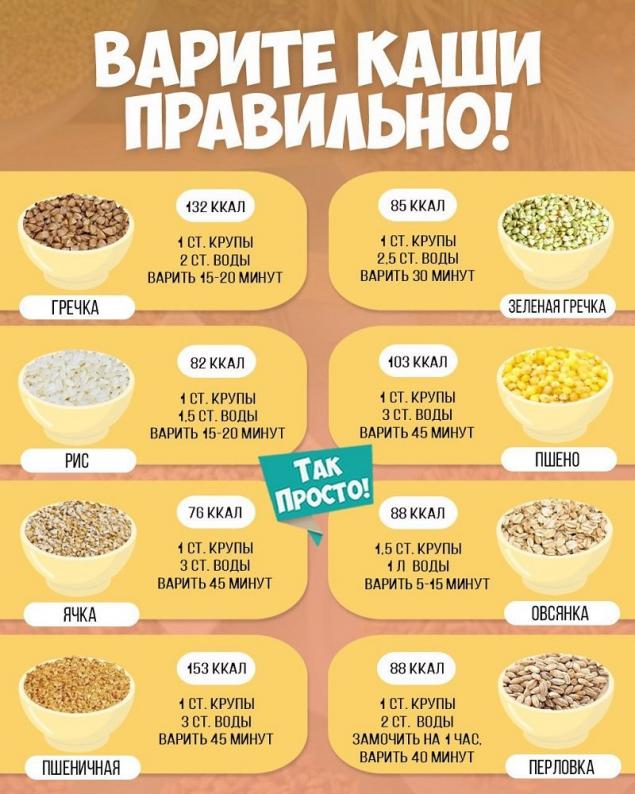
Ideally suitable pans with a thick bottom and a tightly fitting lid, ceramic or cast-iron. It is better not to lift the lid during cooking cereals, since steam plays an important role in preparing porridge.
Cereals are a unique product, we have been used to them since childhood and eat without thinking. As a result, we intensively consume not the most useful and persistently neglect those that are really necessary for the body. In order not to make such mistakes in the future, spend time and figure out what porridge is really useful and which can be abandoned.

In cereals there is everything necessary for our body. But how to properly prepare this or that porridge, not everyone knows. Usually we take cereals, pour water, boil and do not cease to complain about the freshness of taste.

Break stereotypes and prepare a really tasty, crumbly and fragrant porridge from wheat, corn, oatmeal, wheat, pea, buckwheat will help small tricks and unusual ingredients, which will be discussed in this article.
There are general rules that do not hurt to adhere to in the preparation of any porridge. For cooking porridge, enameled pans are not suitable: everything sticks to them, and it is difficult to clean the burnt from the scratch-prone surface.

Ideally suitable pans with a thick bottom and a tightly fitting lid, ceramic or cast-iron. It is better not to lift the lid during cooking cereals, since steam plays an important role in preparing porridge.
- Buckwheat porridge
Buckwheat is the leader among cereals in nutritional value and protein content (up to 16 grams of vegetable protein per 100 grams of cereals). Therefore, it should be used by those who do not eat enough meat and fish.
1 cup of buckwheat requires 2 cups of cold water (for crumbly porridge). Put the cereal in cold water, put it on the stove and bring everything to a boil. After the porridge boiled, reduce the fire and boil for 15-20 minutes.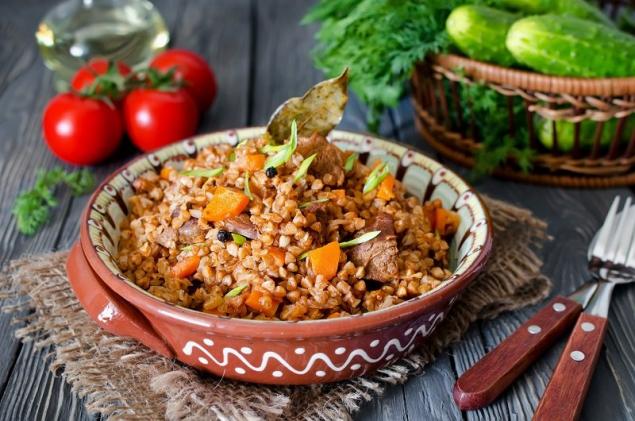
A delicious porridge will turn out if you salt it at the beginning of cooking. Also in the middle you can add sliced onions. Throw it in almost finished porridge, cover it with a lid and don't stir the porridge.
You can achieve a rich and original taste of buckwheat porridge by boiling it on green tea or pouring cereals at night with tomato, beet, apple juice, and in the morning adding vegetables and spices to the porridge.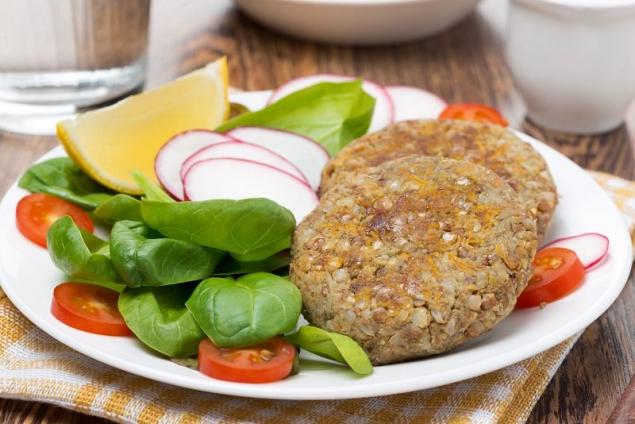
The more delicate taste is different. greenbuckwheat porridge. Green buckwheat is not subjected to such a rigid heat treatment, as usual, and therefore it boasts a large number of useful substances and gets glue, so it is well made of pancakes, bats, cutlets. - Pearl porridge
Rich in fiber, magnesium, selenium and vitamins, pearl cereal is undeservedly considered the food of soldiers and prisoners, because barley can be prepared really tasty.
The main disadvantage of useful cereals is that it will take a lot of time to prepare it. Therefore, before cooking barley soak it: take exactly 1 liter of water for a glass of washed cereals and soak the cereal in water for at least 12 hours. If the cereal was sold already steamed, the soaking time can be reduced to 3 hours.
Roast the pre-soaked barley with onions in vegetable oil, add the wine and continue roasting until it evaporates. Turn down the fire and add some mushroom broth. In 15 minutes, when all the broth has evaporated, add mushrooms and green peas.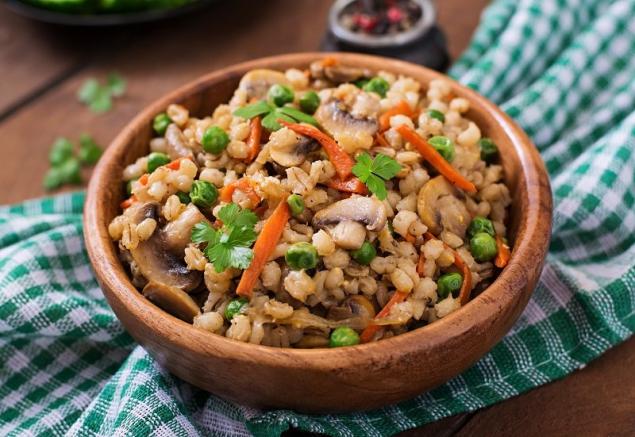
You'll make an orzotto (relative of risotto, but from barley). These dishes are united by a common approach - cooking cereals in a small amount of liquid, when the cereal is not cooked, but stewed, absorbing the aromas of broth and wine. - Wheat porridge
Millet requires careful cleaning of black grains and debris. After that, wash it several times with boiled water, changing it. Finally, scald the cereal with boiling water. So you can get rid of the bitterness of future porridge.
Put the dry cereal on the pan and roast a little without using oil. To prepare 1 cup of cereals, you will need 3 glasses of water (viscous porridge). First bring the water to a boil, then reduce the fire and fill the millet. Cook the croup under the lid for about 30 minutes.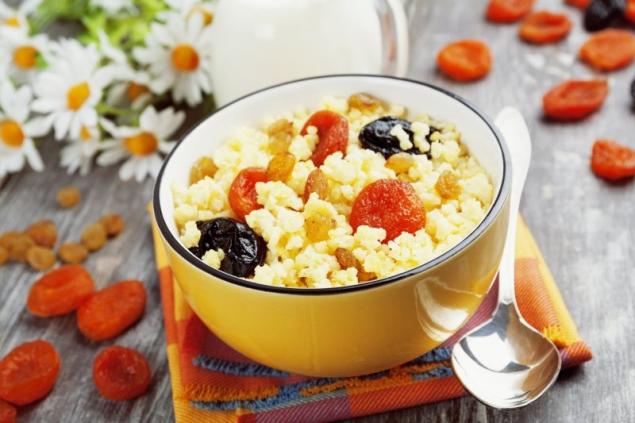
- Corn porridge
Corn cereals are small, medium and large grinding. Small grinding is used in instant cereals and baby food. This cereal is boiled for 15 minutes on low fire. It is from such cereals that the traditional Hutsul banosh and the Moldovan Mamalyga are prepared.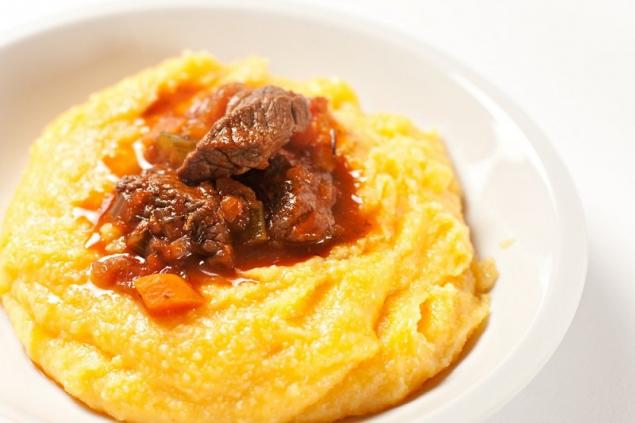
Medium grinding is suitable for most dishes. For 1 glass of such cereals, 2.5-3 glasses of water are needed. Put the cereal in the boiling water. Bring it to a boil, and then reduce the fire.
Embed, cover and boil for 30 minutes until the porridge thickens. Add the butter, stir, cover, wrap the pan and leave alone for about an hour to porridge I insisted.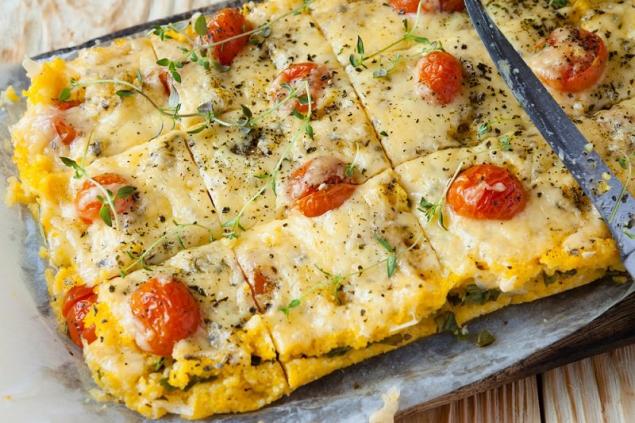
Corn cereals of large grinding effectively cleanses the intestines, but is cooked longer than other species. It is from it that the classic Italian polenta is prepared. The cooking time of such cereals is from 50 minutes. - Mantle porridge
Some housewives claim that pre-soaking helps to avoid the appearance of lumps in the manka. Croup should be mixed with salt and sugar, poured with cold milk, left for 5 minutes.
To prepare the manka according to the classic recipe, pour it in boiling milk and boil it for 5 minutes, stirring constantly. After that, removing the pan from the stove, hold the porridge for 10 minutes in the pan under the lid.
Manca, cooked in a pan without milk, has a completely different taste and consistency. Sprinkle the manka on a heated dry pan, slightly salt and fry over medium heat, stirring the spatula, until golden brown.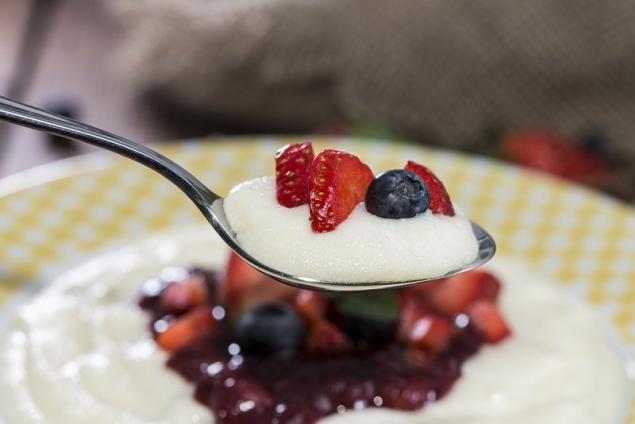
Then reduce the fire to moderate, pour water and cook, stirring intensively, for 2-3 minutes. After that, reduce the fire to a minimum and cook for another 3-5 minutes. Fill the finished porridge with butter and serve it to the table. - Rice porridge
1 cup of rice requires 1.5 cups of water. Put the cereal in pre-salted water. Bring to a boil, turn down the fire and boil for about 10 minutes until ready. When the porridge is ready, don't lift the lid. Let the rice cook for another 10 minutes.
In a steamer, rice is cooked for 35 minutes, with the ideal ratio of rice to water 1: 1. When cooked in a multicooker, the ratio of rice to water should be 3:5. Select the "Grechka" mode and cook until the signal is ready. If you decide to cook sushi or rolls, then after cooking, dry the rice for 20 minutes.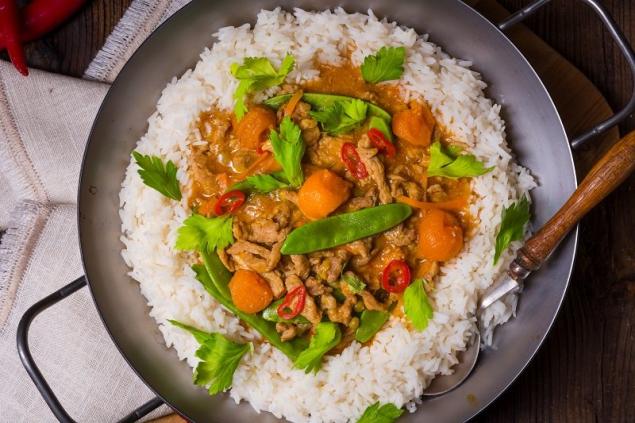
- Oatmeal porridge
The time of cooking oatmeal depends on the size of the oatmeal. If oatmeal is large, it is necessary to cook them for about 10-15 minutes, medium grinding flakes - 7-10 minutes, instant cooking - 1 minute.
The most useful oatmeal is the one that is cooked the longest. Doctors do not advise buying fast cooking oatmeal, because it has the least useful properties. The less cereal is processed, the more useful it is.
You can also cook oatmeal by steaming. Pour oatmeal in the evening with the appropriate amount of freshly boiled liquid and seal tightly. During the night, the oatmeal will absorb liquid and be ready by morning. You just need to warm it up in the microwave.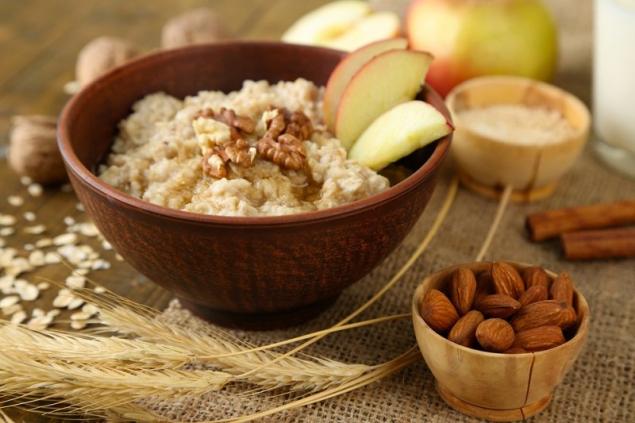
- Barley porridge
Barley cereals are crushed grains of barley, freed from the stump, but not polished. Valuable grains of barley contain lysine, which has an antiviral effect and stimulates the production of collagen. Do you want to prevent wrinkles? Love barley porridge!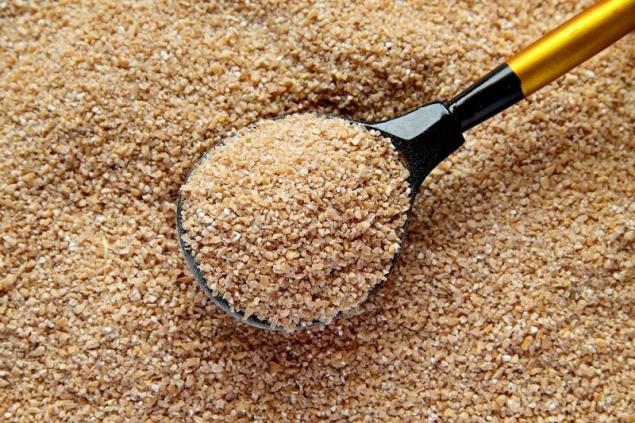
In addition, of all cereals, barley is the lowest calorie - 320 kcal per 100 grams. Before cooking, roast the crushed barley in a dry pan for 4-6 minutes. Pour the barley cereal with cold water in a ratio of 1: 3 and place it on a medium fire.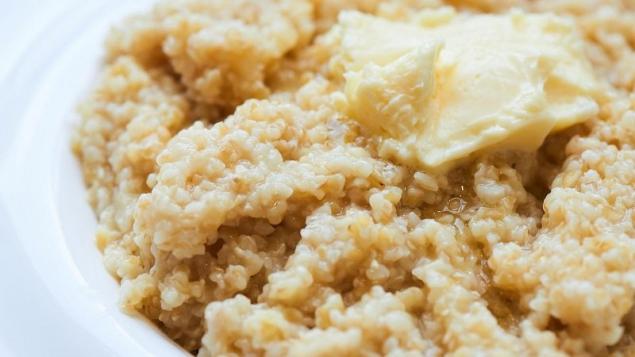
After boiling, the fire was reduced to a minimum. Cook porridge for 35-40 minutes, stirring periodically. When the water is completely evaporated, remove the pot from the fire. Add butter, wrap the pan with a towel and leave for 20-30 minutes to infuse.
Cereals are a unique product, we have been used to them since childhood and eat without thinking. As a result, we intensively consume not the most useful and persistently neglect those that are really necessary for the body. In order not to make such mistakes in the future, spend time and figure out what porridge is really useful and which can be abandoned.


















